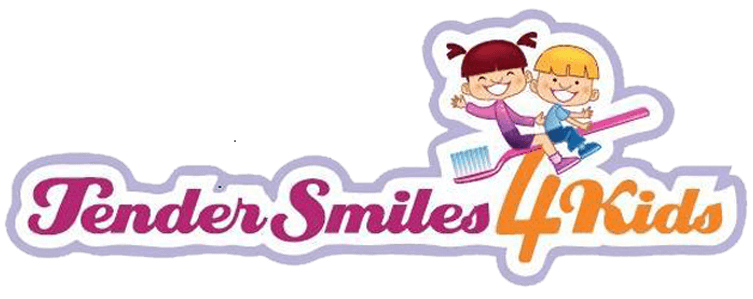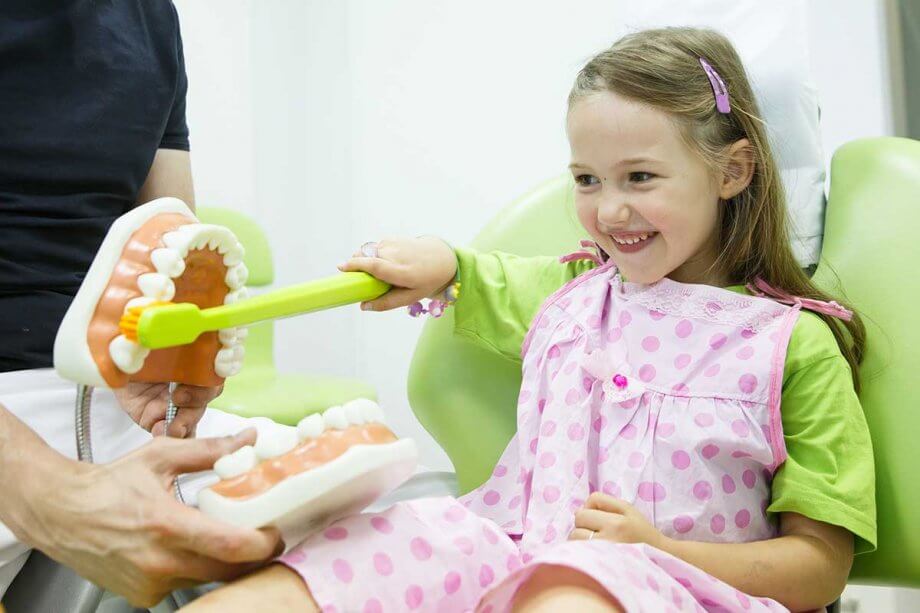If you're a parent, getting your child to brush his or her teeth might just be the bane of your existence. As dental professionals, we understand. During our pediatric dental check-ups, parents often express frustration over daily battles about tooth brushing. We want our patients to look forward to their twice a day oral hygiene routine, but sometimes it takes a little bit of finesse to make it a more positive experience for parents and kiddos alike.
Of course, to teach children how to brush their teeth, it's important that you know how to properly brush your teeth so you can model those good habits. Here's a quick primer for kids and adults.
Use the Right Brush
Think stiff, hard bristles are the best bet for scrubbing away plaque and bits of food? Nope! We recommend a soft-bristled brush, as it's gentler on your gums. Replace your toothbrush every 3-4 months. If it's in your budget to buy an electric toothbrush, that's even better--they'll leave your teeth feeling fresh-from-the-dentist clean after each brushing and for kids, they have timers that help them get that full two minutes of brushing in.
Choose a Fluoride Toothpaste - And Use the Right Amount
There's some controversy about fluoride toothpaste these days, but the American Dental Association still recommends it as the best toothpaste option for kids and adults and this stance is backed by extensive scientific research. Look for the ADA Accepted seal on any toothpaste you buy and be sure to use the appropriate amount for the age of your child. In commercials and ads, you often see a thick ribbon of toothpaste on a brush, but up to 3 years old, a child only needs an amount of toothpaste equivalent to a single grain of rice and over 3 years, a pea-sized amount will do the trick. As for mom and dad? You might be surprised to find out that a pea-sized amount is recommended for adults too!
Use Proper Technique
According to the ADA, the best technique for brushing teeth is to place the toothbrush at a 45-degree angle to the gums and gently move your brush back and forth in short strokes to loosen food and plaque. Be sure to brush the outer, inner, and chewing surfaces. This can be tricky for kids--our advice is to use a gradual approach of starting out by brushing your tot's teeth yourself, then let them do it themselves for a minute and you brush for them for the second minute, and finally you let them take the reins and do a quick check to make sure their teeth look clean.
Brush for the Right Amount of Time
Two minutes, two times per day. Kids will often do a 10-second swipe on the outer surfaces of their teeth and declare their teeth brushed. (And yes, some adults are guilty of this too, especially on those hectic school mornings.) A colorful egg timer on the bathroom sink can be a fun way to get kids to brush for a full two minutes. As mentioned above, electric toothbrushes usually have a built in timer to remind users when two minutes are up--and sometimes even when to switch sides to make sure all surfaces of the mouth get equal brushing time.
Now that we've covered how to brush your teeth properly, how can we make it fun for kids so they actually want to do it? Letting them choose their own toothbrush and toothpaste is a good start, especially for younger kids. It's amazing how a toothbrush with a favorite cartoon character can provide all the motivation toddlers need to get over their brushing aversion. Small rewards, like stickers, also work with young children. (Just please don't reward your kids' tooth brushing efforts with candy!) A reward chart works with all ages--make a deal with your child that if they brush their teeth all week long and get a checkmark each day, they'll get some kind of reward at the end of the week.
Want to talk to us more about your child's tooth brushing habits? We’d love to meet with you! Schedule an appointment at one of our four convenient New Jersey locations today.

